by Noushin Afzali // Dec. 22, 2023
Maryam Firuzi’s artistic practice is deeply intertwined with the cultural richness of the city where she was born—Shiraz, Iran—renowned for its poets and magnificent monuments that stand as silent testaments to centuries of history. An expert in Persian calligraphy, Firuzi has fostered a connection to this traditional art form that adds a distinctive layer to her photographic series. With an academic background in cinema and screenwriting, she integrates various mediums into her photography projects, creating a complex tapestry where storytelling takes on visual dimensions. In this interview, our conversation unfolded around the pivotal role of women in shaping her artistic practice, while also exploring the transformative impact the women’s movement has had in our home country.
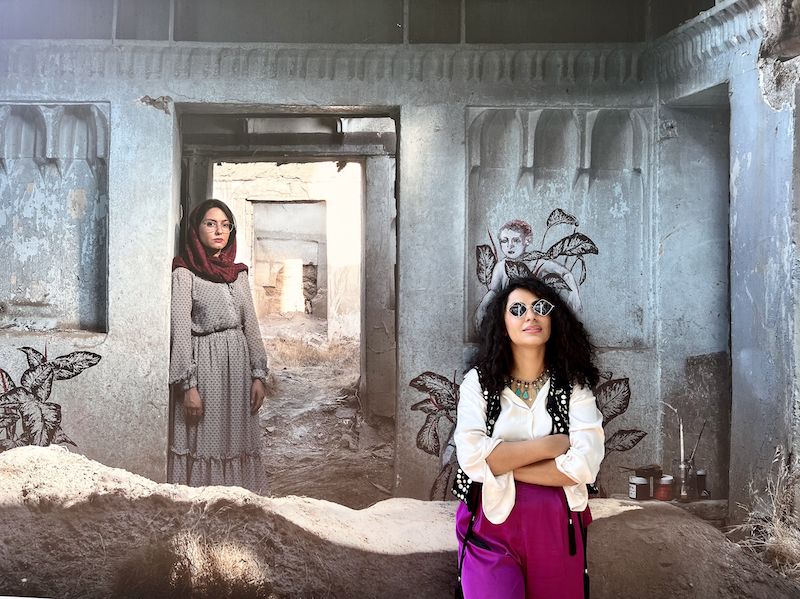
Maryam Firuzi, portrait at Baden Festival // Courtesy of the artist
Noushin Afzali: You once said, in an interview, “In my opinion, all artistic mediums are intertwined.” Your photographic series evoke the ambiance of cinematic frames, a resonance stemming from your academic background in cinema and screenwriting. Why did you choose photography as the medium for narrating your stories?
Maryam Firuzi: The precise moment when photography assumed significance in my life eludes definition. I’ve made numerous choices throughout my life, yet there are moments when you find yourself adrift in the water, unaware of it, and the current gains strength in a particular direction, pulling you along with it. I found myself submerged in the expansive world of art, where calligraphy, painting, cinema, literature and poetry enveloped my entire existence. Each artistic form held importance, with cinema emerging as a particularly pivotal influence. In this immersive journey, photography became the swift current in the river that carried me along.
Photography, to me, represents the culmination of everything I’ve absorbed throughout my life. It seems that photography serves as a medium to seamlessly blend reality and imagination into a singular image—a vibrant portrayal that leaves one uncertain of its authenticity. This delicate balance between certainty and uncertainty is enchanting. In photography, this moment transcends mere temporal significance; it evolves into a magical interplay between the eternal and the transient, a unique characteristic inherent to the medium itself.
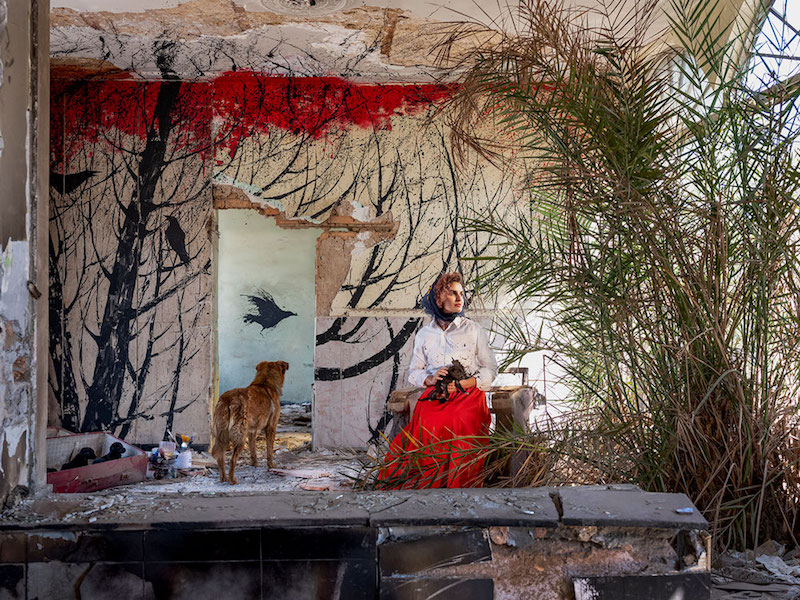
Maryam Firuzi: ‘Scattered Memories of a Distorted Future’ // Courtesy of the artist
NA: Women occupy a central position in your photographic series. Against the backdrop of recent transformations in Iran, how has this role evolved? Having recently visited Iran myself, I must acknowledge the profound changes in the cityscape, with numerous women fearlessly navigating the urban scene sans hijab—a testament to the nationwide protests last year. In what ways has this transformative shift influenced you, as both a woman and an artist?
MF: My artistic endeavors spring from my personal preoccupations, seamlessly intertwining with broader societal issues as these realms are inherently linked. The women alluded to are, in essence, reflections of myself, serving as a continuation of the women from preceding generations. We find ourselves deeply entrenched in the heart of the current conditions and historical epochs, making it challenging to adopt a detached perspective. Consequently, providing a clear-cut answer to your question is difficult for me. However, I agree that the scenes you observed on the streets of Tehran bear testament to the enduring struggle of Iranian women spanning over a century.
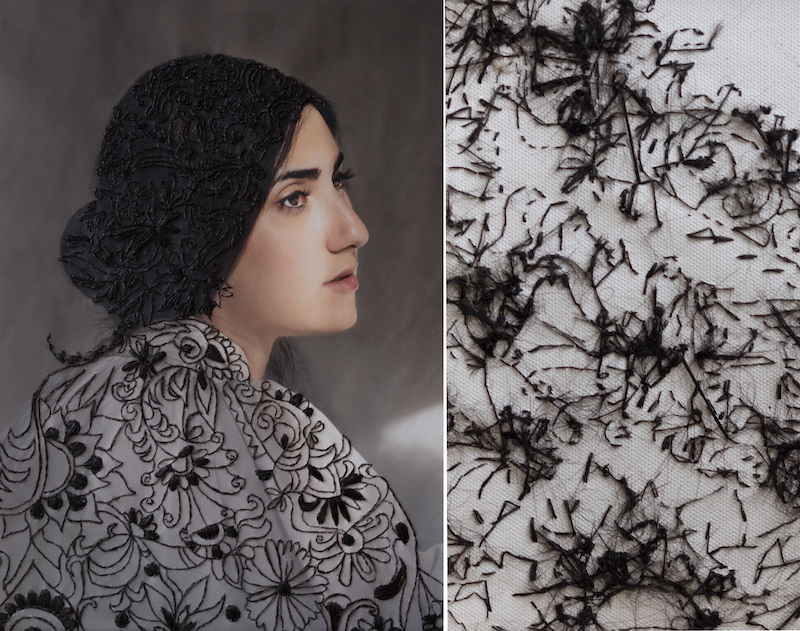
Maryam Firuzi: ‘Emily,’ from the series ‘Gisoo,’ 2017-2020 // Courtesy of the artist
NA: Let’s talk about your series ‘Gisoo’ (2017-2020), which is Persian for “hair” and offers an intimate exploration of several women and their relationship to their hair. In this narrative, hair emerges as a symbol of autonomy. Could you share the inspiration behind this project?
MF: I embarked on the ‘Gisoo’ project in early 2017 and concluded it by 2020. ‘Gisoo’ encapsulates my lament for the challenge of portraying women without censorship. In 2015, while working on a film, my central character, a perplexed female artist, sequestered herself in her apartment, navigating the realms of her dreams and nightmares. The portrayal of this woman without a hijab proved unattainable in Iranian cinema. Simultaneously, depicting her in solitude with a hijab posed significant challenges. To address this, I crafted a wig for her, yet even this posed a problem, due to its natural beauty. Therefore, we transformed the wig entirely, to underscore that it did not comprise the woman’s actual hair.
In the ‘Gisoo’ collection, I tried to censor women’s hair in my photos using the same element that often prompts censorship—their own hair. I photographed women who gave me their hair, embroidering it onto their pictures. I obscured the image of their hair with their authentic strands, effectively censoring it. This approach aligns with Islamic principles that dictate covering shaved hair is unnecessary. I leveraged this principle to showcase women’s hair, using it as a form of rebellion against censorship.
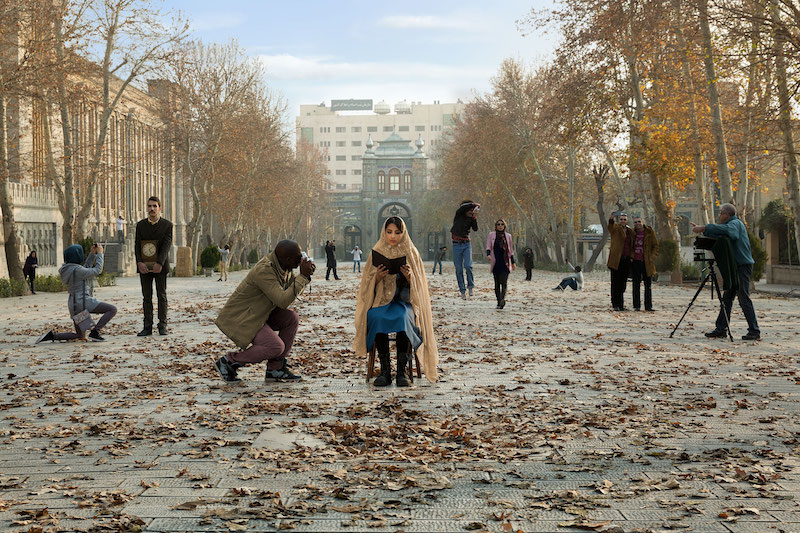
Maryam Firuzi: ‘Reading for Tehran Streets,’ 2014-2016 // Courtesy of the artist
NA: Let’s revisit your inaugural project, ‘Reading for Tehran Streets’ (2014-2016), where you assume the role of the protagonist, immersing yourself in the urban landscape of Tehran while reading before the camera. This series skilfully blurs the demarcations between the public and private domains–a significant gesture in a country marked by a profound contrast between these spheres. How, in your view, does art serve to challenge authoritarianism, especially in the context of such boundary-blurring expressions?
MF: What has elevated art to the most paramount principle in my life is its boundless nature. It has convincingly demonstrated that even in the face of censorship, artistic imagination remains indomitable. Art, akin to spiritual water, persistently refines like a polishing force against stones, unfailingly seeking an outlet. I cannot overlook the profound realization that, in my childhood and adolescence, the more constraints I faced, the more ardently I sought solace in art. It became a realm where I discovered the entirety of the world and the freedom denied to me, by both my family and society.
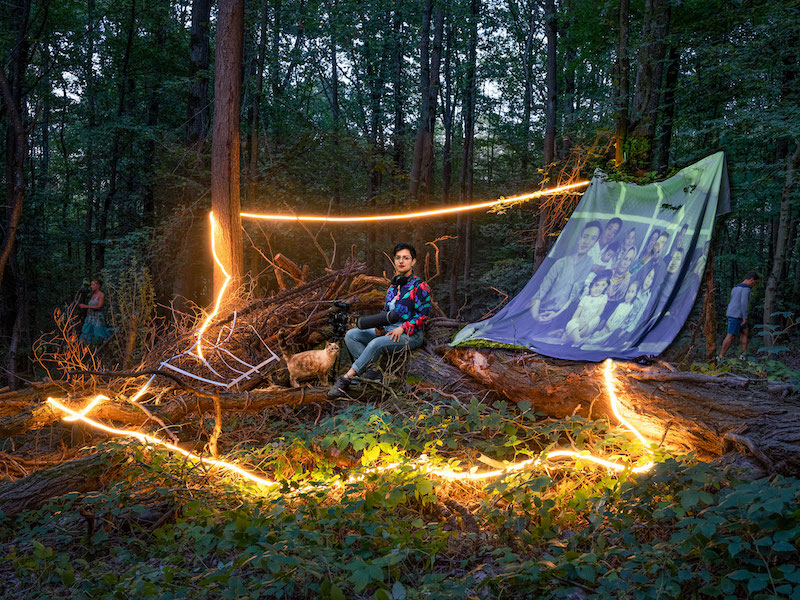
Maryam Firuzi: ‘Afsanah Salari’ from the series ‘There’s Always a Distance’ // Courtesy of the artist
NA: Tell us about your upcoming projects.
MF: Before my current project, I was only focused on the issues of urban, middle-class women, that is, the society I come from. In my new project, ‘In The Shadows Of Silent Women,’ for the first time, I have gone out of the big cities to find women who still maintain their local and ancestral traditions, and I show them in family groups. In each photo, you can see several generations from the same family. This is my first documentary project and I have taken more than 40 photos and traveled to most parts of Iran, such as Kurdistan, Khorasan, Azerbaijan, Gilan, Khuzestan, Hormozgan, Chaharmahal, Bakhtiari, Fars, and more. I have driven more than 30,000 kilometers on this trip and I have traveled with my mother to most of these areas. So my mother and I were a small group of women entering larger communities of women. This project, which is coming to an end, has been the most different and complex project that I have carried out independently until now.






















